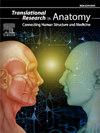External validation of femoral sex estimation equations: Evidence supporting population-specific standards in forensic anthropology
Q3 Medicine
引用次数: 0
Abstract
Background
Sex estimation from skeletal remains represents a fundamental step in forensic identification, with femoral measurements offering reliable alternatives when traditional pelvic and cranial elements are unavailable. Population-specific variation significantly affects accuracy, yet no external validation has examined cross-regional applicability of Thai femoral sex estimation equations. This study evaluated the performance of established Thai regional equations when applied to independent samples.
Materials and methods
External validation was conducted using 200 femoral specimens (100 male, 100 female) from northeastern Thailand, representing an independent collection not used in previous equation development. Five femoral parameters were measured following standardized protocols. Performance of sex estimation equations from northeastern, central, and northern Thai populations, plus one Chinese equation, was assessed through comprehensive validation metrics including accuracy, sensitivity, specificity, Cohen's kappa, and area under the curve (AUC) from ROC analysis.
Results
The northeastern Thai equation demonstrated optimal performance with 93.0 % accuracy, κ = 0.86, and AUC = 0.975 when applied to the same population. Cross-regional Thai equations showed moderate accuracy reductions: central Thai achieved 91.5 % and northern Thai achieved 90.5 %. The Chinese equation exhibited the greatest decline at 87.0 %, representing a 6.5 % reduction from optimal performance. Male classification consistently outperformed female classification across all equations with sensitivity ranging from 92.0 to 95.0 % versus specificity ranging from 82.0 to 91.0 %. Performance decline correlated with increasing population genetic distance.
Conclusion
External validation confirms the importance of population-specific standards in forensic anthropological practice. While Thai regional equations maintain acceptable cross-regional performance, optimal accuracy requires population-appropriate equation selection. The substantial performance decline with ethnically distant equations emphasizes careful equation selection for reliable forensic identification.
股骨性别估计方程的外部验证:法医人类学中支持特定人群标准的证据
从骨骼遗骸中估计性别是法医鉴定的基本步骤,当传统的骨盆和颅骨元素无法获得时,股骨测量提供了可靠的替代方法。人口特异性差异显著影响准确性,但没有外部验证检验泰国股骨性别估计方程的跨区域适用性。本研究评估建立泰国区域方程的性能时,适用于独立的样本。材料和方法外部验证使用了来自泰国东北部的200个股骨标本(100个男性,100个女性),代表了之前未用于方程开发的独立收集。按照标准化方案测量5个股骨参数。来自泰国东北部、中部和北部人群的性别估计方程,加上一个中国方程,通过综合验证指标进行评估,包括准确度、灵敏度、特异性、科恩kappa和ROC分析的曲线下面积(AUC)。结果在相同人群中,东北泰方程的准确率为93.0%,κ = 0.86, AUC = 0.975。跨区域的泰语方程显示出适度的准确性降低:泰语中部达到91.5%,泰语北部达到90.5%。中国方程表现出最大的下降,为87.0%,代表从最佳性能下降6.5%。在所有方程中,男性分类始终优于女性分类,灵敏度为92.0 - 95.0%,特异性为82.0 - 91.0%。性能下降与群体遗传距离增加有关。结论外部验证证实了人群特异性标准在法医人类学实践中的重要性。虽然泰国区域方程保持可接受的跨区域性能,但最佳精度需要人口适当的方程选择。种族距离方程的实质性性能下降强调了为了可靠的法医鉴定而仔细选择方程。
本文章由计算机程序翻译,如有差异,请以英文原文为准。
求助全文
约1分钟内获得全文
求助全文
来源期刊

Translational Research in Anatomy
Medicine-Anatomy
CiteScore
2.90
自引率
0.00%
发文量
71
审稿时长
25 days
期刊介绍:
Translational Research in Anatomy is an international peer-reviewed and open access journal that publishes high-quality original papers. Focusing on translational research, the journal aims to disseminate the knowledge that is gained in the basic science of anatomy and to apply it to the diagnosis and treatment of human pathology in order to improve individual patient well-being. Topics published in Translational Research in Anatomy include anatomy in all of its aspects, especially those that have application to other scientific disciplines including the health sciences: • gross anatomy • neuroanatomy • histology • immunohistochemistry • comparative anatomy • embryology • molecular biology • microscopic anatomy • forensics • imaging/radiology • medical education Priority will be given to studies that clearly articulate their relevance to the broader aspects of anatomy and how they can impact patient care.Strengthening the ties between morphological research and medicine will foster collaboration between anatomists and physicians. Therefore, Translational Research in Anatomy will serve as a platform for communication and understanding between the disciplines of anatomy and medicine and will aid in the dissemination of anatomical research. The journal accepts the following article types: 1. Review articles 2. Original research papers 3. New state-of-the-art methods of research in the field of anatomy including imaging, dissection methods, medical devices and quantitation 4. Education papers (teaching technologies/methods in medical education in anatomy) 5. Commentaries 6. Letters to the Editor 7. Selected conference papers 8. Case Reports
 求助内容:
求助内容: 应助结果提醒方式:
应助结果提醒方式:


